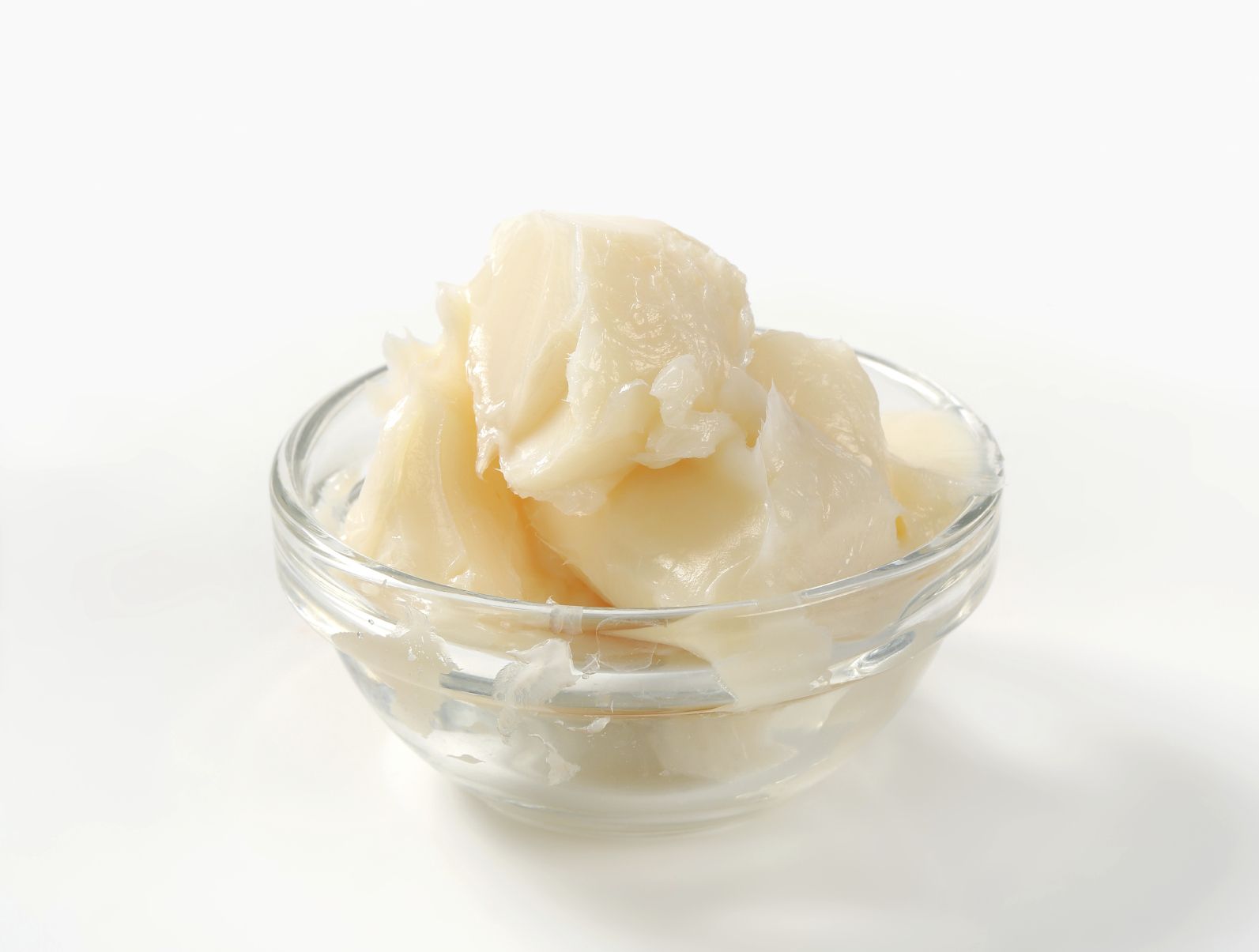10 Reasons to Bring Lard Back

Lard is healthy!
In recent generations, lard has seemed to completely disappear from home kitchens. Until the early 1900’s, lard was a staple cooking fat across the globe. It was the secret to perfectly flaky pie pastry, crispy fried chicken, melt-in-your-mouth biscuits and luscious gravy.
Now, when people hear the term lard, they immediately conjure up a vision of clogged arteries. It’s time to set the record straight – lard is a healthy cooking fat and deserves to make a comeback in kitchens everywhere.
1. Lard is heat stable
When it comes to determining the stability of a fat, it’s all about chemistry. Saturated fats have single bonds between all the carbon molecules of the fatty acid chain and are therefore the most heat-stable. That’s because single bonds, when it comes to the fatty acid carbon chain, are relatively difficult to break. Monounsaturated fats have one double bond replacing a single bond in the carbon chain. Double bonds in fatty acids are unstable and can break with heat. Polyunsaturated fats are the most unstable, because they have numerous double bonds in the carbon chain. When the double bonds in mono- or polyunsaturated fats break, the fatty acid undergoes a process calledoxidation.
Why are oxidized fats bad? In a nutshell, oxidized fats = free radicals. Free radicals = cell damage. While we inevitably have some free radicals in our body, we should minimize these damaging molecules as much as possible to protect health and reduce inflammation.
According to Mary Enig, author of Know Your Fats, lard is typically 40% saturated fat, 50% monounsaturated fat and 10% polyunsaturated fat. (Pastured hogs consuming a diet supplemented with grain or coconut will have a lower percentage of polyunsaturated fat – a good thing!). The percentage of saturated fat in lard protects the more vulnerable mono/polyunsaturated fats from oxidizing with heat, making lard an excellent choice for cooking and baking.
2. Lard is heart-healthy
“Lard is an animal fat, and it is high in saturated fat and cholesterol. Doesn’t that mean it raises my risk for heart disease?” The pervasive myth that animal fats increase the risk of heart disease is just that – a myth. Our great-great-grandparents consumed lard and butter and experienced extremely low rates of heart disease. Lard is part of a healthy diet and will not give you heart attack:- An analysis of more than 300,000 people published in the American Journal of Clinical Nutrition shows that there is no evidence that saturated fat consumption raises the risk of heart disease (1)
- A low fat diet has been shown to increase triglycerides, which is a risk factor for heart disease (2)
- The Women’s Health Initiative studied nearly 50,000 post-menopausal women – one group of women were told to follow a low fat diet, and the other group continued to eat “normally.” After 8 years, there was no difference in the rate of heart disease or cancer between the groups. (3)
- Numerous other large studies have found no benefit to a low fat diet (4)
- The director of the large Framingham Heart Study concluded, “We found that the people who ate the most cholesterol, ate the most saturated fat, ate the most calories, weighed the least and were the most physically active.”
- Saturated fat intake raises HDL cholesterol, which is associated with a reduced risk of heart disease (5)
- The “diseases of modern civilization” including heart disease and diabetes skyrocketed as animal fats were replaced with factory fats including vegetable oils and margarine. Take a look at the graph here.
- The cholesterol content of lard is health-protective, not dangerous (see reason #9 below)
3. Lard is neutral flavored
Like me, many of you choose to cook with coconut oil because it is a heat-stable cooking fat. Coconut oil does impart a mild-to-moderate coconut flavor to dishes, however. And while I enjoy the flavor, sometimes I want a neutral-flavored option. That’s when I choose lard.
For sautéing and deep-frying, nothing beats the cooking properties of lard. It creates a divinely brown crust to vegetables and meats without a distinct flavor. Due to the neutral flavor, it also works exceptionally well in baked goods (see #7).
4. Lard is economical
I purchase quart-sized tubs of lard from my local farmer for $7.50 a quart. You will likely be able to find pastured lard at a similar price. If not, you can request pastured hog fat from your butcher and then render lard yourself (it’s very simple, here’s a tutorial).
When it comes to healthy cooking fats, lard is definitely the most affordable. For example, my other favorite cooking fats – coconut oil and grassfed butter – cost exponentially more.
5. Lard is high in vitamin D
Lard is the second highest food source of vitamin D, after cod liver oil. One tablespoon of lard contains 1,000 IU’s of vitamin D. Also important, vitamin D is a fat-soluble vitamin so it requires fatty acids – including saturated fatty acids – to be absorbed and utilized in the body. Lard provides the perfect package of vitamin D along with the required fatty acid cofactors. Other food sources of vitamin D, including pastured egg yolks and liver, pale in comparison to the amount of vitamin D in lard.
There is a catch, however: only lard from pastured hogs contains vitamin D, since the pigs must have access to sunlight to synthesize the D and store it in their fatty tissues. Grocery store tubs or sticks of lard are from confined, antibiotic-laden pigs and should be avoided. Purchase your lard from a butcher or farmer who can tell you how the pigs are raised.
Read more here